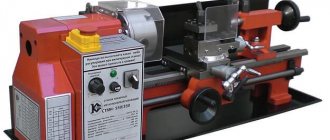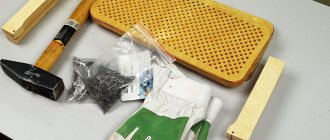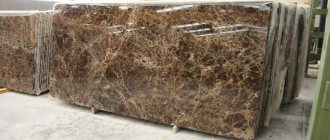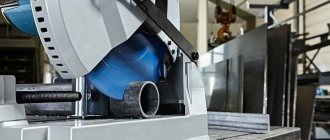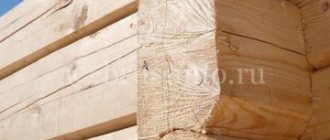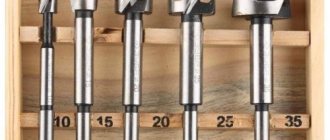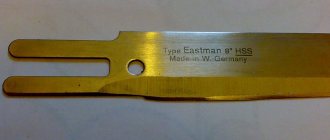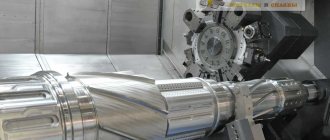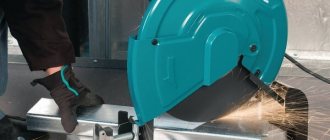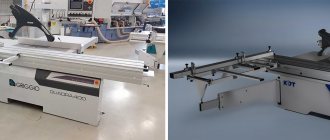Self-tapping screw production technology
This group of products is produced by cold stamping. It is customary to use as raw materials:
- brass;
- steel (standard, stainless or high carbon).
The material is used in the form of wire, which is already twisted into skeins. The production technology of self-tapping screws can be divided into the following stages:
- preparation of the workpiece - cutting the wire to a given size;
- tip and head formation;
- thread formation;
- hardening of the product by rapid heating and cooling in a hardening wheel;
- treatment of the product with anti-corrosion material.
The production line consists of a cold heading and thread rolling machine, as well as a centrifuge for drying the product, a galvanizing line and a hardening furnace. When drawing up a business plan for the production of self-tapping screws, be prepared that more than half of the investment will go to the purchase of equipment. The operating speed of the mini-machine depends on the degree of its productivity and can range from 50 to 250 pieces per minute. The price of the simplest machines (any machine from the entire line) starts from 80 thousand rubles, more complex equipment for the production of self-tapping screws varies between 500-900 thousand rubles. In any case, to purchase a full line you need a starting capital of 600 thousand rubles.
By opening a mini-factory with expensive equipment, you can quickly recoup your initial investment, since the productivity of such technologies is much higher. Profitability will also increase due to the production of higher quality products and the ability to expand the range.
Thread rolling machine
Next, the product goes to the thread rolling machine. This hardware production equipment forms threads on the surface of the material using cold rolling. Depending on the settings, it has a different application step, depth and location on the workpiece.
Simultaneously with this process, additional hardening of the hardware occurs. Mechanical pressure on the surface strengthens its structure, improving performance properties. Some types of products require additional heat treatment - hardening. First, their surface is heated to a certain temperature and then cooled in a cold oil solution. As a result, the strength of the hardware increases, but at the same time its fragility increases.
Dowel production technology
The dowel is a fastener often used in construction, the demand for which is high and practically does not depend on the seasonality factor. That is why this niche can be considered highly profitable and quickly pays for itself.
On the other hand, the production of plastic dowels requires significant costs and detailed calculations.
Regardless of the scale of the project, nylon or polyvinyl chloride is used to make dowels. Experts recommend using nylon, since this material makes it possible to produce fasteners for thermal insulation. Using PVC will slightly reduce the cost, but the price of such dowels is also significantly lower.
At the initial stage, the raw material is supplied in the form of granules, then processed. The manufacturing process of this group of products consists of the following stages:
- preparatory process;
- melting nylon or PVC;
- pressing the mass, creating finished products.
As a rule, all lines for the production of dowel nails are automated. Since the quality of manufactured products practically does not depend on the human factor, it is worth investing in reliable equipment from well-known manufacturers.
In order to produce dowels of different sizes and parameters, a full-fledged production line is required. Equipment for the production of plastic dowels:
- centrifuge;
- thermoplastic;
- Press forms.
To install the line, you will need a small production workshop, which can be located outside the city to minimize rental costs. The cost of such a line averages 1.2-1.8 million rubles. To minimize costs, you can purchase cheaper equipment from Chinese manufacturers or used technology.
Cold stamping production
The production of bolts using this method requires certain parameters of the raw materials. These include plasticity, uniform composition, mechanical characteristics, absence of external and internal defects (non-metallic inclusions, porosity, scratches and captivity on the surface, gas bubbles).
Surface defects are removed mechanically or by fire. Next, contaminants such as scale and grease deposits are cleaned. The latter is removed by etching, which involves immersing the material in a 10–20% mixture of sulfuric acid or concentrated hydrochloric acid. In the first case, the procedure lasts 15–110 minutes, in the second – 10–30 minutes. Next, they are washed to remove sludge and acid successively with hot and cold water.
Afterwards liming is carried out. In some cases, a lubricating layer is created. Next, for workpieces made of low-alloy steels, phosphating is carried out by using usually a 3% mixture of zinc phosphate salt for 10–15 minutes.
Finally, a lubricant is applied, represented by a mixture of machine oil and molybdenum sulfide or paraffin liquid and ukrinol. Instead, you can use soap emulsion. The final operation is drawing.
Cold stamping involves turning a blank into a product with planned geometric parameters. The name of the technical process reflects that in this case heating of the metal is not used. This reduces elongation and contraction of the material, as well as increases hardness, strength and fluidity. In addition, during the considered stamping of blanks, the material is mechanically strengthened.
This technique has some advantages. Firstly, with its use it is possible to create products of various sizes (up to 5.2 cm in cross-section). Secondly, cold forging provides high productivity. Thirdly, this manufacturing technology uses little material. Fourthly, it ensures final dimensional accuracy, surface finish and part strength.
For cold stamping there are several defining parameters:
- Workpiece deformation. This is the main parameter that determines the technological map.
- The ratio of the height of the head to the cross-section of the final product. Determines the complexity of production.
- The ratio of the cross-section to the length of the upsetting workpiece fragment.
The technological process for manufacturing a bolt according to the above method includes several stages. At the first stage, the initial shape of the head is created. This is done by rolling wire through different molds. The first rolling is aimed at straightening and lengthening it. After rolling, the source material is divided into blanks with a reserve for heads. Next, a core is formed for each fragment by passing it through a press, and the heads are also formed using a number of presses.
Screw production technology
A screw is a common and widely used fastening element, which is a metal base with a thread and an edged head. It is made of stainless steel or brass. Equipment for equipping a production line costs from 1.2 million and depends on the degree of productivity, country of origin, and capacity. If you plan to firmly establish yourself in your chosen niche and offer high-quality products with a wide range, you should not skimp on technical equipment. The relatively high cost of equipment will allow us to produce higher-quality screws and quickly recoup the investment costs and reach the break-even point.
Equipment for the production of screws:
- cold heading automation;
- thread rolling machine with chip separator;
- automated line for heat treatment;
- automated line for anti-corrosion coating.
The production of screws as a business consists of the following stages:
- production of blanks - base of a given length and head;
- thread cutting;
- heat treatment in a hardening furnace;
- application of phosphated or galvanized coating.
Raw materials
The starting material is steel or brass wire. The material must be selected based on the final purpose of the screws. For example, screws from:
- stainless steel - used when working with wood;
- high-carbon steel - used where a high hardness coefficient is needed;
- brass - for finishing work.
We deliver spools of rolled metal wire to production. It is easy to get it in Russia. One reel produces approximately half a million self-tapping screws. It is better to purchase it directly from the manufacturer at wholesale prices. This will reduce costs.
Bolts and nuts production technology
A screw pair, which consists of bolts and nuts, is a commonly used form of metric fastener. The inside of the nut has a thread that screws onto the bolt. The result is a strong, reliable mount. The following raw materials are used to produce nuts and bolts:
- stainless, carbon, chrome or alloy steel;
- bronze;
- titanium;
- copper;
- brass.
Their manufacturing technology is based on the cold method of continuous shaping from rod or wire. Wound on a reel, the wire is sent to a bolt cutting machine, which makes blanks of a given size. The base then goes through several shaping dies. The thread is rolled onto the final workpiece.
Equipment for the production of nuts and bolts:
- nut threading machine;
- cold heading automation;
- die;
- stamping machine;
- cold heading tools – bushings, inserts, punches, dies, etc.
On average, a full-fledged line for the production of bolts and nuts will cost 800 – 1200 thousand rubles.
The production of which hardware is most relevant today?
Hardware is an abbreviation for the phrase “metal products,” which implies a very large product group made of metal.
Hardware also includes common consumer goods - knives, scissors, as well as industrial products that are used directly in construction, furniture manufacturing, etc.
In order to somehow differentiate all metal products, they are conventionally divided into two large categories: general purpose and industrial use.
You can build your own business by producing any type of hardware, but in this case we will consider exactly the type of business that is based on the production of metal products for construction, that is, hardware for industrial use.
Such hardware includes various types of fasteners:
- Bolts and nuts.
- Self-tapping screws.
- Nails.
- Screws.
- Dowels.
All of the listed hardware are in great demand, because each of them is used in construction. Don’t look at the low cost (one unit of metal product costs about 40 kopecks)! When constructing a residential building, they are bought in kilograms, and sometimes in tons, because such a business can bring good profits.
This is also justified by the fact that the markup on hardware for construction is up to 70% when it comes to wholesale sales, and up to 150% when it comes to retail.
In addition, such production is in demand in every region of Russia, so it doesn’t matter where you live, because building materials are needed everywhere.
But when organizing your own business, you must take into account supply and demand in the market of your city in order to occupy the production niche that is least filled with competitors.
It is much more difficult to do this in a large metropolis, because numerous construction hypermarkets are overflowing with metal products. In this case, you can produce custom products; this niche is still quite empty.
As for small towns, even a small garage enterprise producing one type of product can bring consistently high profits.
Business ideas for a small city
What kind of hardware production is best to choose?
This question is difficult to answer unequivocally, since you need to focus on consumer demand in each individual region.
You should also take into account the fact that all hardware has a distinctive production technology and requires the purchase of different equipment, which may require any financial investment.
Next, we will tell you how each type of metal product is manufactured and what equipment it needs. In the meantime, pay attention to where to start a hardware production business.
Recruitment
Purchasing new technologies and automated lines minimizes payroll costs, since most of the processes that required hiring employees are performed automatically.
The availability of labor depends on the type of production chosen and the equipment purchased. Average wages in Russia for blue-collar workers per month:
- turner - from 25 to 40 thousand rubles;
- technologist, engineer – 35-45 thousand rubles;
- mechanic - 28-32 thousand rubles;
- welder – 30-35 thousand rubles;
- loader – 20-25 thousand rubles.
When hiring employees, it is better to hire experienced specialists. A competent personnel policy will save your time and money in the future.
Ways to sell products
The production of hardware is a profitable business, since fasteners have always been in high demand among individuals and large enterprises.
You can sell goods wholesale to small sellers, place information about products in the media and the Internet. Some companies, along with a production workshop, open their own retail outlet, selling high-strength fasteners and other products at a maximum margin. On the one hand, this option requires additional investments, on the other hand, your company will always have a stable supplier in the person of itself.
Potential consumers of hardware products:
- construction organizations, including small teams for finishing work;
- enterprises producing household appliances;
- furniture workshops, up to private small workshops;
- manufacturing enterprises associated with the production of construction and finishing materials;
- markets with construction assortment;
- trade organizations, both large (wholesale) and small stores.
Large and medium-sized construction, industrial and furniture organizations, as well as wholesale trade enterprises and large construction stores will be the most likely and convenient for cooperation.
Advantages of working with them:
- work is carried out under long-term contracts;
- the opportunity to receive advance payment for the release of future products;
- constant source of sales;
Work with small enterprises at the stage of production formation should be based only on the principle of advance payment.
Sales and deferred payment are unprofitable for several reasons: small organizations will not bring in much revenue, but in case of delays in payments, a significant amount of time will be spent on collecting debts than on engaging in their main production.
Financial part
You can organize a production workshop in any locality. In order to produce about 2 million units of fasteners per month, an investment of 1 million rubles is needed. Most of the expenses are needed to purchase equipment. The final amount depends on this choice.
Approximate starting costs for organizing a production workshop for the production of hardware:
- purchase, transportation and installation of equipment – 600 – 1500 thousand rubles;
- registration of an enterprise – 10 thousand rubles;
- workshop equipment – 30 thousand rubles.
Monthly costs:
- purchase of raw materials, materials - from 150 thousand rubles;
- rental payments – from 30 thousand rubles;
- wage fund – from 40 thousand rubles;
- utility bills, payment of taxes - from 25 thousand rubles.
As can be seen from the calculations, monthly expenses will amount to 245 thousand rubles, which is 2.94 million per year. The amount of investment for the implementation of the project will be from 885 thousand rubles. up to 1.6 million rubles
If on average one fastener costs 20 kopecks, you can receive about 400 thousand rubles monthly. Based on approximate calculations, net profit for the year could amount to 1.86 million rubles. (4800000 – 2940000).
Download for free a short business plan for a workshop for the production of self-tapping screws (.rar file): Example 1
Production of fasteners (hardware) as a business
The production of fasteners (hardware) as a business line does not lose its popularity among entrepreneurs due to high profitability rates and constant demand for products. Hardware products are in demand by both construction companies and individuals. Not a single repair or construction project is complete without the use of various fasteners.
The general concept of hardware products includes hundreds of items and positions, the production of which requires specialized expensive equipment. In the general list of hardware, a favorable position is occupied by perforated fasteners, which are in great demand in the construction market and require relatively small investments to start production compared to other hardware.
Perforated fasteners and their production
The production of perforated fasteners is a line for the production of products of various shapes, in which a special machine makes many holes. The most popular among consumers are corners, mounting tapes and plates.
When starting production, an entrepreneur needs to decide what raw materials the fasteners will be made from.
Builders give preference to products that have a high-grade zinc coating, thanks to which the product becomes universal and suitable for both external and internal decoration.
An entrepreneur should think about whether he will buy already galvanized raw materials or carry out the galvanizing procedure in his workshop.
To do this, you need to compare the cost of raw materials with and without coating, and then, based on the difference in price, calculate the benefits of installing galvanizing equipment in your workshop.
As a rule, it is more profitable to apply the coating on site, but the purchase of raw materials already prepared for production from official dealers of metallurgical plants is accompanied by the provision of certificates of the coating class and guarantees the high quality of perforated fasteners.
In general, the entire production process of perforated fasteners can be divided into 3 main parts:
- preliminary preparation of raw materials (steel sheets);
- marking and cutting steel strips;
- applying perforation and giving the strip the required shape.
To ensure the production of high-quality products, it is necessary to pay special attention to the selection of equipment for the production of hardware.
Equipment
The demand for fasteners gives rise to a large number of offers on the professional equipment market, offering new and used machines at a variety of prices.
Used equipment will certainly cost a businessman less than new equipment, but how long it will last and how much money will have to be invested in repairs if it breaks down cannot be predicted in advance.
That is why we recommend purchasing a new machine that has warranty service and does not require preliminary repairs.
a machine for the production of hardware, depending on the production capacity and country of origin, at a price from 800,000 to 3,000,000 rubles. Do not rush to immediately buy a heavy-duty, expensive machine and invest more than one million in the workshop: the hardware market is characterized by seasonality and a large number of competitors.
To begin with, focus your attention on machines up to 1 million rubles. In addition to the machine, to create an automated production line you will need to purchase an unwinder, a guillotine, a receiving table and a roll forming machine. It will take another half a million rubles from the entrepreneur’s wallet to purchase additional equipment.
In total, creating a production line will cost approximately 1,300,000 rubles.
Shop
The production of fasteners (hardware) as a business places some basic requirements on the premises, compliance with which guarantees a well-coordinated work process:
- uninterrupted supply of electricity and water;
- availability of heating in the cold season;
- availability of a bathroom;
- proper ventilation system;
- availability of access roads;
- availability of a beam crane for unloading/loading.
To place all the equipment, you need a room of about 100 square meters. m. Since the work line is quite noisy and dusty, it is necessary to equip a small area for employees where they can have lunch and relax in peace.
The cost of renting such premises for regions of Russia with the exception of Central is on average 100,000 rubles.
Workers
Purchasing an automated line frees the entrepreneur from recruiting a whole staff of specialists. To control the operation of equipment for the production of fasteners , only a few people will have to be employed, and specifically:
- equipment and production control specialist: 2 people;
- packer: 2 people.
When production gains regular customers and sales volumes increase, additional staff can be hired to work.
Raw materials
Manufacturers must enter into an agreement for the supply of raw materials before launching the line.
It is best to cooperate with official dealers of metallurgical industries, because they guarantee the quality of raw materials and minimum prices.
In addition, large plants have representative offices and warehouses in almost every city, which reduces the cost of delivery. But an agreement can be concluded only after the entrepreneur has been assigned the status of an individual entrepreneur or LLC.
For most manufactured perforated products, galvanized sheets with a thickness of 2 and 2.5 mm are required. Approximately 1 ton of raw materials will cost an entrepreneur 55,000 rubles. The initial recommended purchase volume is 3 tons, or 165,000 rubles.
Promotion and sales
In order for money to appear in the company’s current account for purchased products, while still “on shore”, when drawing up a business plan, the businessman must resolve issues related to organizing sales.
It is necessary to determine whether the production will work for retail, cooperate only with wholesalers, or use both options in tandem. All conditions and agreements must be recorded in a formal contract, which must be signed and sealed by both the buyer and the supplier.
In any case, you will need an employee who will form commercial offers and engage in active sales. In order to motivate an employee to work efficiently, it is advisable to establish piecework payment for him and provide him with a mechanism for stimulating sales in the form of a system of discounts and bonuses.
Before producing...
Cooperation with market counterparties involves the official registration of production activities with the Federal Tax Service of the Russian Federation. If an entrepreneur alone manages production and finances its creation, then he creates an individual entrepreneur. If a business in the production of fasteners (hardware) is sponsored by several individuals, they usually form an LLC together and own equal shares.
To create an LLC you will need 14,000 rubles, 4,000 of which is the state duty, and 10,000 is the authorized capital. Assigning the status of an individual entrepreneur costs only 800 rubles, which is spent on paying the state fee.
In a situation where production is opened on the basis of an existing enterprise, you need to contact the tax authority with an application to enter an additional OKVED code and a receipt for payment of the state duty. The cost of making changes is 800 rubles.
Let's sum it up
So, when the whole process is thought out inside and out, it’s time to calculate how much money will be needed to implement the project. The amount of starting investments with stage-by-stage expenses is presented in the form of a table.
| Cost item | Amount, rubles |
| Equipment | 1 300 000 |
| WorkshopRaw materials | 100 000165 000 |
| Registration | 800 |
| Total | 1 565 800 |
Launching production will cost the entrepreneur 1,565,800 rubles.
Monthly production costs will consist of the cost of rent, utility bills, employee salaries, costs of raw materials and packaging.
Where can I get so much money?
Not every aspiring entrepreneur can boast of having a couple of free millions in their account. If you don’t have money or don’t have enough money to start, you can use one of the suggested options:
- Bank loan;
- leasing;
- equipment rent;
- investor assistance;
- related loan.
The use of any of the options implies the return of funds, taking into account remuneration, within the period agreed upon by the parties. But in order to receive start-up capital or use leasing, an entrepreneur needs to prepare a forecast calculation of profit.
Forecast indicators
In most cases, in the first year of operation, production works in bulk, selling fasteners through intermediaries who are focused on purchasing large quantities. By concluding an agreement with wholesale companies and knowing their monthly needs, you can calculate the amount of expected profit.
The selling price of production is equal to the cost of fasteners, increased by 50%. The cost of fasteners is on average 300,000 rubles, which per month with full sales of products gives an income of 450,000 rubles. The amount of expected profit per month is 150,000 rubles.
At a given level of profit, the payback period for the initial investment is calculated as the fraction of profit and initial investment and is 1,565,800/150,000 = 10.5 months.
Should know
When launching the production of perforated fasteners, it is important to know some of the nuances inherent in this area.
- Firstly, the presence of a seasonal factor. Manufacturers note a decrease in sales volumes during the winter periods from approximately October to March.
- Secondly, dependence on market prices for raw materials. Leading metallurgical plants change prices for raw materials, which has a direct impact on the formation of the cost of fasteners.
- Thirdly, the level of competition. It is extremely short-sighted to open fastener production in a city where the hardware plant is the city-forming enterprise and supplies all large wholesalers with all the necessary fasteners.
Preliminary analysis and careful calculations will allow you to determine a competent work strategy and bring production to a decent level.
